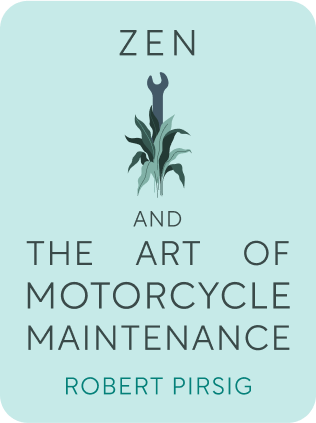

This article is an excerpt from the Shortform book guide to "Zen And The Art Of Motorcycle Maintenance" by Robert Pirsig. Shortform has the world's best summaries and analyses of books you should be reading.
Like this article? Sign up for a free trial here .
Do you want to know how to overcome setbacks? What advice does Zen and the Art of Motorcycle Maintenance provide?
In Zen and the Art of Motorcycle Maintenance, learning how to overcome setbacks in life is another important part of the book’s philosophy. You can use the philosophies in the book, like gumption, to learn how to overcome setbacks in life.
Read more about how to overcome setbacks in life using Zen and the Art of Motorcycle Maintenance.
How to Overcome Setbacks
In the process of attending to our task with a calm mind, there’s always the possibility that unforeseen problems may arise. Pirsig calls these annoyances “gumption traps,” for they siphon off the initial enthusiasm—the gumption—we feel as we become attuned to Quality and immersed in our work.
Although there are likely an infinite number of gumption traps, Pirsig narrows the field to two main types: Setbacks, which are external circumstances that divert us from the Quality path; and Hang-Ups, which are internal circumstances that do.
An all-too-common setback is the “leftover part” setback. Say, for example, you’re assembling an engine and nearly have it completed…when you discover not only that you’ve forgotten an essential part but also that you have to reassemble the whole thing! A setback like this can absolutely drain your gumption reservoir.
Pirsig offers two techniques to reduce the effects of this particular setback:
Take Disassembly Notes
As you disassemble, make note of any particulars that you think might give you trouble as you reassemble.
Lay Parts Down in Order
Pirsig spreads newspaper on the floor of his garage and lays the parts down left-to-right, top-to-bottom in order of disassembly. When you begin to reassemble, you can pick up the parts in reverse order.
A second common setback is the “intermittent failure” setback. This is a malfunction that seems to fix itself right as you begin to repair it, then later crops up again (typically at the worst possible time). Intermittent failures are a gumption trap because you’re constantly being waylaid for a problem you think you’ve solved.
Pirsig’s solution to intermittent failures is to pay close attention to what else is going on with the cycle when the failure occurs. Is the road bumpy? Are you making a turn? These correlations can help guide you as you develop hypotheses.
The third most common setback is the “parts” setback. This setback encapsulates a number of challenges involving parts: one, needing them in the first place; two, finding them at a reasonable price; and three, discovering the part you’ve purchased doesn’t fit.
Zen and the Art of Motorcycle Maintenance can be a helpful tool in learning how to overcome setbacks.

———End of Preview———
Like what you just read? Read the rest of the world's best book summary and analysis of Robert Pirsig's "Zen And The Art Of Motorcycle Maintenance" at Shortform .
Here's what you'll find in our full Zen And The Art Of Motorcycle Maintenance summary :
- How an unnamed narrator and his son are on a cross-country motorcycle journey
- Why technology can be creative
- How to focus on what's in front of you in order to get exactly what you need






